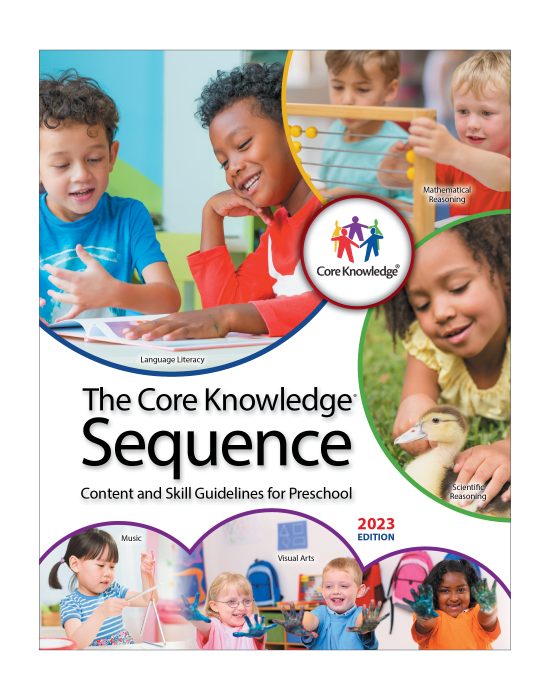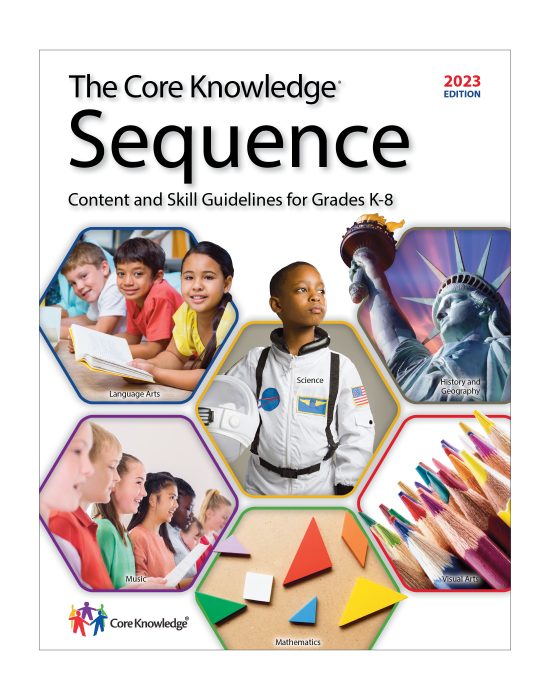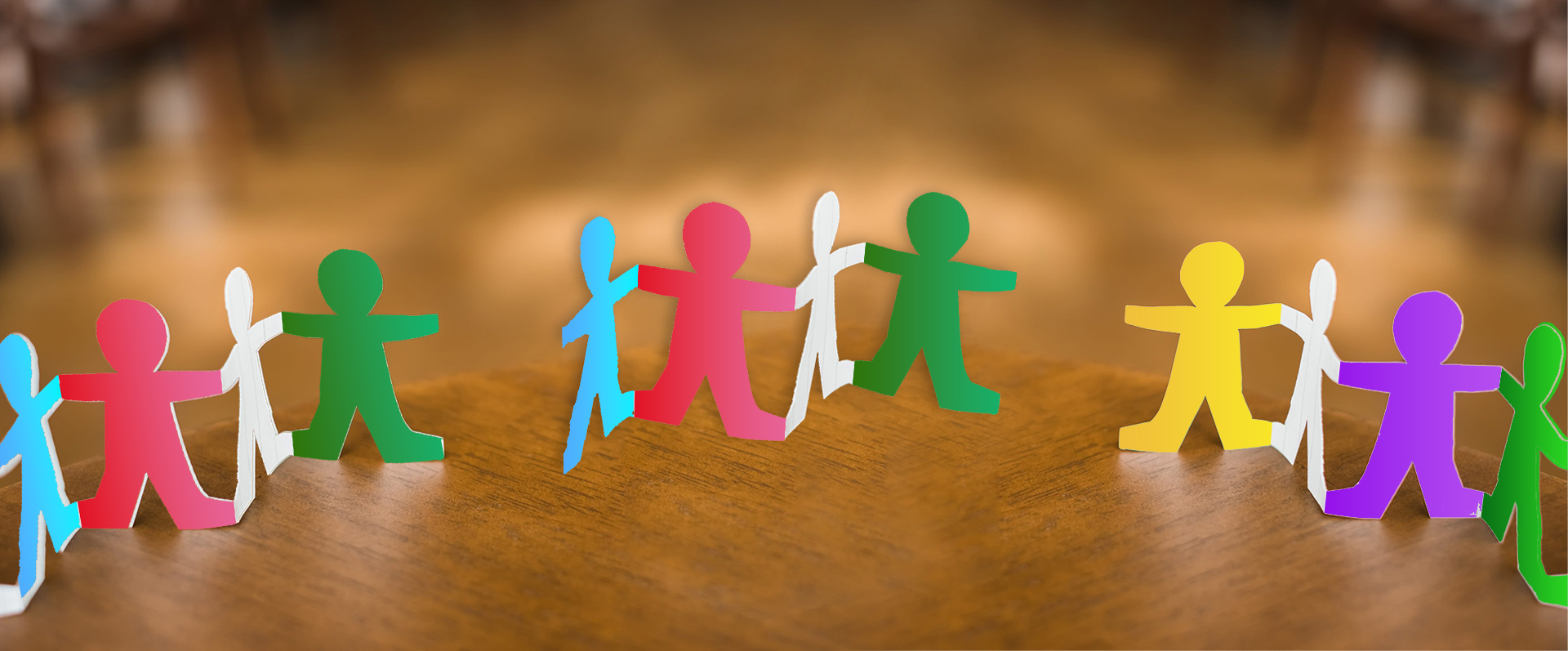What is the Core Knowledge Sequence?
Educational excellence and equity require a coherent, cumulative, knowledge-based curriculum. This basic principle inspired the Core Knowledge Foundation to undertake the long process of research and consensus-building that led to the development of the Core Knowledge Sequence, the blueprint for knowledge-based schooling.
The Core Knowledge Sequence represents our best effort to identify and describe the specific core of shared knowledge that all children should learn in U.S. schools. The Sequence is intended to help children establish strong foundations of knowledge grade by grade from preschool through grade eight.
Current Edition for K–8 and Preschool


For Grades K–8
The 2023 Core Knowledge Sequence provides a detailed outline of specific content and skills to be taught in language arts, history, geography, mathematics, science, visual arts, and music.
For Preschool
For children from 3 to 5 years of age, the 2023 Core Knowledge Preschool Sequence describes fundamental competencies and specific knowledge that provide coherent foundations for later learning in kindergarten and beyond.

Revision Process
We at the Core Knowledge Foundation fervently believe that our experience over the past thirty years in championing the use of a coherent, cumulative, content-specific curriculum in schools throughout the United States can be of significant value to states and school districts looking to take the next step forward.
To that end, we offer this updated, 2023 edition of the Core Knowledge Sequence. Our original mission, Excellence and Equity for All Children, remains unchanged. The simple, yet powerful underlying premise of Core Knowledge, that knowledge builds on knowledge, still fuels our mission. Many of the changes made in this latest edition reflect new findings from cognitive research, current standards, and a concerted effort to incorporate more inclusive representation of the peoples and cultures that have shaped the world into what we know today, while still holding true to the idea there is a body of lasting knowledge and skills that form the core of a strong Preschool through Grade 8 curriculum. This includes the fundamentals of science, basic principles of government, important events in history, essential elements of mathematics, widely acknowledged masterpieces of art and music from around the world, and stories and poems passed down from generation to generation. This explicit identification of what children should learn at each grade level ensures a coherent approach to building knowledge across all grade levels, making efficient and effective use of instructional time.
We are grateful to those who took the time to provide feedback on our draft sequence and proposed updates. Over the past thirty years, we have been able to refine and fine tune the implementation of Core Knowledge, thanks to the effort and feedback of thousands of teachers who have put the Core Knowledge Sequence into practice in real classrooms with real students. We have attempted to reflect our increased wisdom with regard to effective implementation in this 2023 edition of the Sequence.
What distinguishes the Core Knowledge Sequence from other curriculum guidelines?
Compared to most curriculum standards, the Core Knowledge Sequence embodies three essential but often overlooked qualities. The Sequence is:
A typical state or district curriculum standard might say, “Students will demonstrate knowledge of people, events, ideas, and movements that contributed to the development of the United States.” But which people and events? Which ideas and movements? Another standard says, “Determine the main idea of a text and explain how it is supported by key details; summarize the text.” But what text in particular?
The Core Knowledge Sequence is distinguished by its specificity. By clearly specifying important knowledge in language arts, history, geography, math, science, and the fine arts, the Sequence presents a practical answer to the question, “What do our children need to know?”
The Sequence is not a list of facts, events, and dates to be memorized. It is a guide to content from grade to grade, designed to encourage steady academic growth and progress as children build knowledge and develop skills year after year.
The Core Knowledge Sequence provides a clear outline of content to be learned from preschool through grade eight. Knowledge, language, and skills build cumulatively from grade to grade. This cumulative building of knowledge helps ensure that children enter each new grade ready to learn.
Teachers in Core Knowledge schools can confidently predict the knowledge and skills children have been taught in prior grades, build on that learning, and prepare them for what comes next. That’s because the Core Knowledge Sequence is built on the principle, firmly established by cognitive scientists, that we learn new knowledge by building on what we already know.
Individual students will differ in their degree of mastery, and mobility will require focused help for students who lack the expected prior knowledge. But the cumulative quality of the Core Knowledge Sequence greatly increases the likelihood that as children proceed from one grade to the next, they will emerge well prepared with a shared body of important knowledge and skills.
In the United States, especially in language arts instruction, curriculum tends to be fragmentary and disconnected. Such incoherence can hinder learning and vocabulary acquisition. It also leads to the repetitions and gaps that too many children experience in their early education.
In contrast, the Core Knowledge Sequence provides a coherent approach to building knowledge within a grade level and across grade levels. In schools following the Sequence, there are no repeated units in multiple grades on, say, the rain forest or pioneer days, with little or no attention to the Bill of Rights, world geography, or exposure to other cultures.
The Sequence is organized to support coherent instruction that allows students to build and deepen their knowledge grade by grade, and to make cross-curricular connections across subjects.
For example, in a school following the Core Knowledge Sequence, students in fifth grade study the Renaissance. The word “renaissance” means “rebirth”—specifically, in Europe in the 1500s, a rebirth of interest in ancient Greece and Rome. Teachers in a Core Knowledge school can confidently build on students’ prior learning about ancient Greece and Rome (grades 2 and 3) and the Middle Ages (grade 4). They can connect their historical studies to topics in Visual Arts (in which the Sequence specifies masterworks by Leonardo da Vinci, Michelangelo, and others) and in Language Arts (in which the Sequence specifies episodes from Shakespeare’s A Midsummer Night’s Dream and Cervantes’s Don Quixote).
Connecting across subjects and building on previous knowledge—these qualities make the Sequence coherent and effective. Take a look at some other examples of cross-curricular coherence in the Core Knowledge Sequence.

Are you ready to join the Core Knowledge Community?
It uses tools like Facebook Groups and Pinterest Boards to give teachers a place to share their ideas and resources, ask questions, learn from each other, and connect with other schools teaching Core Knowledge.
